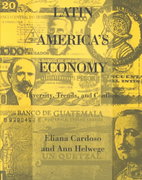Question
Suppose the production function is F(K, L) = KDL 1 where K is capital, L is labor and D is land. Capital, land and labor
Suppose the production function is F(K, L) = KDL 1 where K is capital, L is labor and D is land. Capital, land and labor are all supplied inelastically: K, D, L. Let K = 4, D = 1 and L = 1 and = 0.5, = 0.1.
1. Set up the firms' profit maximization problem. What is labor demand for the firm? That is, as a function of real wages W P , capital, K and land, D, how much labor do firms want? What is capital demand? What is land demand?
2. In general equilibrium (i.e. resolving that K = K , D = D) how much labor will there be?
3. In general equilibrium (i.e. resolving that K = K , D = D) what will the price of labor (i.e. real wage W P ) will there be?
4. Does income add up to output? Show it.
5. What fraction of income goes to labor?


Step by Step Solution
There are 3 Steps involved in it
Step: 1

Get Instant Access to Expert-Tailored Solutions
See step-by-step solutions with expert insights and AI powered tools for academic success
Step: 2

Step: 3

Ace Your Homework with AI
Get the answers you need in no time with our AI-driven, step-by-step assistance
Get Started


